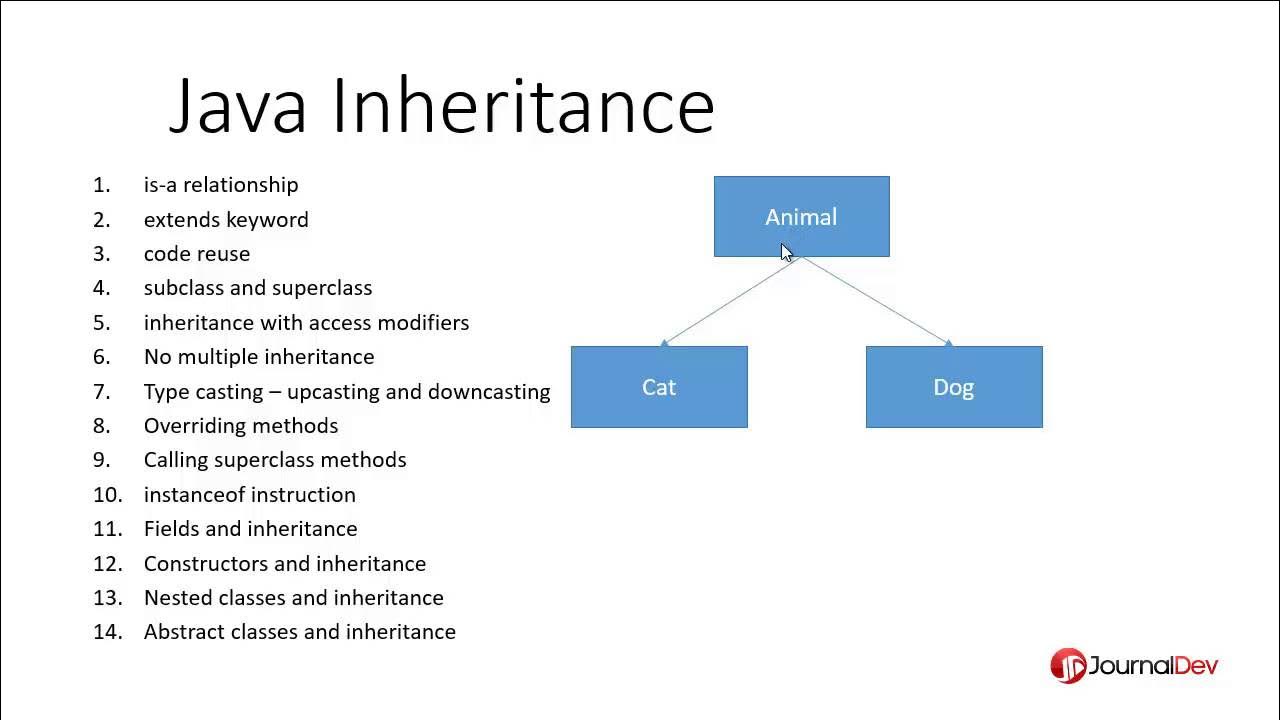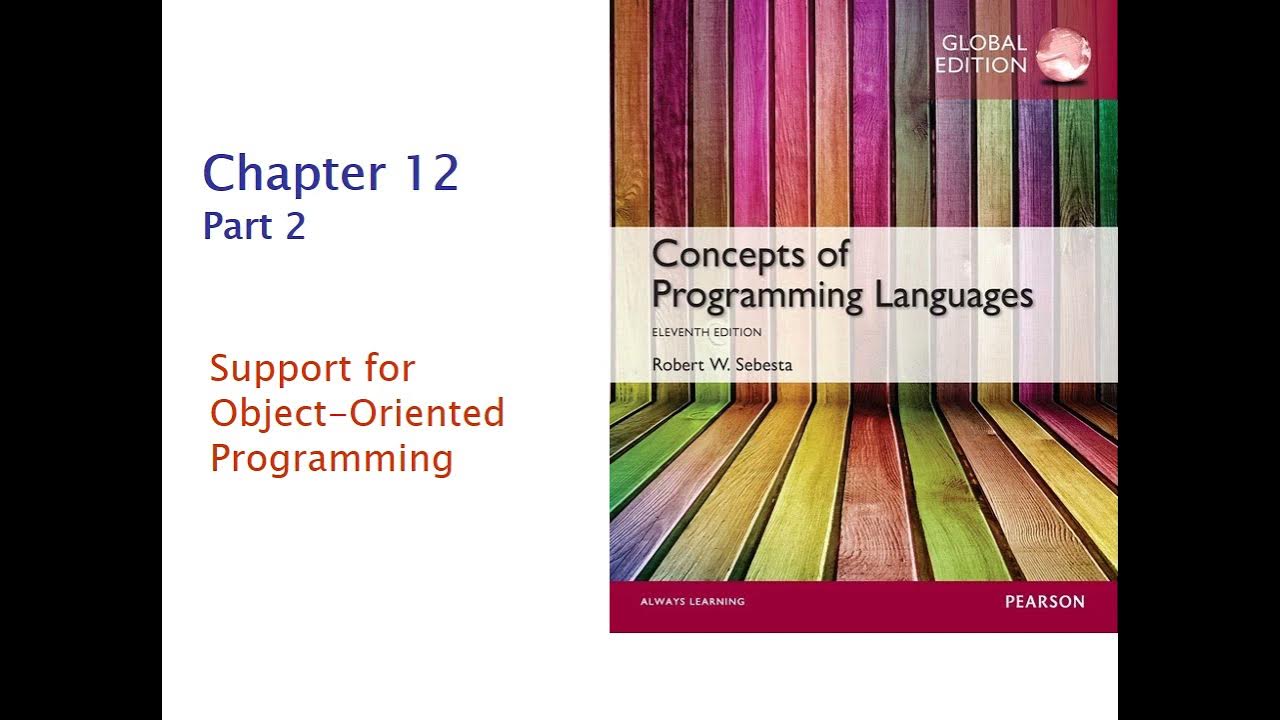Belajar Java [OOP] - 18 - Pengenalan Inheritance
Summary
TLDRThe script is a Java tutorial focusing on the concept of inheritance in object-oriented programming. It explains inheritance as a way of passing attributes and methods from a superclass to a subclass, using a familial analogy to clarify. The tutorial covers creating classes, extending them, and the benefits of inheritance in reducing code redundancy. It also introduces the idea of overriding methods, setting the stage for further discussion in subsequent videos.
Takeaways
- 😀 Inheritance in Java is a way to establish a relationship between classes where one class can inherit properties and behaviors from another.
- 🏆 The class that inherits properties and methods is called a subclass, while the class that provides these properties and methods is known as the superclass.
- 👨👦 The concept of inheritance is analogous to a parent-child relationship, where the child (subclass) inherits traits from the parent (superclass).
- 🏘️ Inheritance allows for code reusability, reducing redundancy and making it easier to maintain and extend existing code.
- 🔑 The 'extends' keyword in Java is used to create a subclass that inherits properties and methods from a superclass.
- 🛠️ Methods and attributes from the superclass can be overridden in the subclass to provide specific functionality.
- 🌐 The script uses a real-world example of a father and son to explain how inheritance works, where the son inherits properties from the father.
- 🔄 The script also discusses the concept of 'is-a' relationship in inheritance, indicating that a subclass is a specific type of its superclass.
- 📝 The tutorial covers the basic syntax and usage of inheritance in Java, including creating classes and objects that utilize inherited properties and methods.
- 🔍 The script briefly mentions interfaces and how they relate to inheritance, suggesting that further learning will be needed to fully understand these advanced concepts.
Q & A
What is inheritance in the context of object-oriented programming?
-Inheritance in object-oriented programming is a mechanism where a class (child class) can inherit attributes and methods from another class (parent class). This promotes code reusability and reduces redundancy.
What is the term used for the class that inherits from another class?
-The class that inherits from another class is called a subclass or a child class.
What is the term used for the class from which another class inherits?
-The class from which another class inherits is called a superclass or a parent class.
Can you provide an example of inheritance from the script?
-Yes, the script uses a family inheritance example where 'Si Otong' inherits a car and a house from 'Si Babeh'.
What is the purpose of using inheritance in programming?
-The purpose of using inheritance in programming is to promote code reusability, reduce redundancy, and establish a hierarchical relationship between classes.
How does inheritance relate to the 'is-a' relationship?
-Inheritance establishes an 'is-a' relationship, where a subclass 'is-a' type of its superclass. For example, if there is a class 'Hero' and a subclass 'HeroIntel', then 'HeroIntel' is a type of 'Hero'.
What is the keyword used in Java to establish inheritance between classes?
-The keyword used in Java to establish inheritance between classes is 'extends'.
What is the difference between a superclass and a subclass?
-A superclass is a base class from which other classes inherit, while a subclass is a derived class that inherits from a superclass.
Can a class inherit from more than one class in Java?
-No, in Java, a class can only extend one superclass, but it can implement multiple interfaces.
What is the concept of 'overriding' mentioned in the script?
-Overriding is a concept where a subclass provides a specific implementation for a method that is already defined in its superclass.
Why is inheritance useful when creating a class hierarchy?
-Inheritance is useful when creating a class hierarchy because it allows for the creation of a base class with common attributes and methods that can be shared among multiple subclasses, reducing the need to rewrite code for each subclass.
Outlines

This section is available to paid users only. Please upgrade to access this part.
Upgrade NowMindmap

This section is available to paid users only. Please upgrade to access this part.
Upgrade NowKeywords

This section is available to paid users only. Please upgrade to access this part.
Upgrade NowHighlights

This section is available to paid users only. Please upgrade to access this part.
Upgrade NowTranscripts

This section is available to paid users only. Please upgrade to access this part.
Upgrade NowBrowse More Related Video

Inheritance in Java - Java Inheritance Tutorial - Part 1

Inheritance in Java - Java Inheritance Tutorial - Part 2

Belajar Java [OOP] - 22 - Latihan Inheritance

Praktikum 2 PBO - Java Inheritance

COS 333: Chapter 12, Part 2

Java 8 new features || Java 8 Interview Questions and Answers ( Live Demo with Examples )
5.0 / 5 (0 votes)